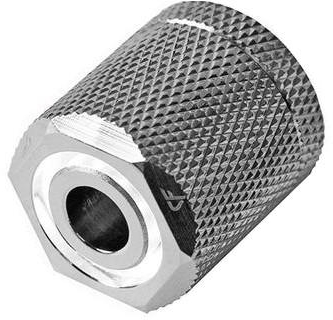Firearms are both exciting and terrifying. Depending on the person, they’ll either command respect and awe for the marvels of engineering they are, or they’ll be shunned by fearful people who’d rather they never existed.
And it seems to be primarily those in the latter camp writing the articles in the media about firearms. Reports not driven by knowledge and respect, but fear and ignorance. It is, thus, not surprising their reports are wrong a lot of the time. In many cases, it seems as if the writer is literally making shit up and not bothering to do any fact checking.
Andy Greenberg is no different with his article on Wired about a new advance in “ghost guns”, or firearms that don’t bear a serial number.
There is a predominant “worst first” mentality in these media reports on firearms. And it isn’t just with firearms, mind you, that this mentality appears. I’ve pointed it out with, of all things, flirting. And Lenore Skenazy has made a career out of pointing it with regard to parenting.
With the recent tragedy in Las Vegas, and the reporting and demonstrated ignorance that has stemmed from that, I guess I can’t be surprised anymore, given the times (here, here, here, here, here, and here) where I’ve called out the media for getting something so drastically wrong.
“80% lowers”
This latest advance in “ghost guns” involves 80% lower receivers. Specifically a frame for an M1911 pistol.
An 80% lower is typically seen with AR-15s, and can be purchased without going through an FFL as they are not regulated as a “firearm”. The reason is quite simple: you can’t just buy it and build a firearm from it.
The “80%” label means you need to complete it. Typically this involves a drill press (not something to try with a hand drill) and several different drill bits. And the intended holes have to be precisely drilled and machined or the completed firearm may not function safely. There are jigs and kits available to make this easier.
On an AR-15, the lower receiver “receives” the trigger group, safety, magazine retention (the magazine well is part of its structure), pistol grip, and stock. The upper receiver holds the barrel, bolt carrier group (BCG) and charging handle (CH), and also has a rail for mounting a rear sight, scope, or red dot sight. The lower and upper receivers are attached by two thick pins.
A completed lower receiver is the only part of an AR-15 kit that is required by the ATF to have a serial number. Transfers require an NIST background check when sold by an FFL. It can also be transferred between two non-FFL parties through a private transfer without a background check.
Completed AR-15 lowers manufactured without a serial number, such as a lower purchased as an 80% and completed by the purchaser, by law, cannot be transferred at all. And any AR-15 rifle completed from a completed 80% lower also cannot be transferred. It is a Federal felony to transfer such firearms and lower receivers.
Defense Distributed and 80% Lowers
The focus of Greenberg’s article is Defense Distributed. The name may sound familiar as they are the originator of the “Liberator”, a 3D printed, single-shot .22LR pistol. They are also manufacturer the “Ghost Gunner“, which is a glorified CNC machine designed to assist in finishing an 80% lower.
Specifically their 80% lowers. The article focuses on the 1911 pistol, one of the lowers that Defense Distributed sells.
Currently you can buy a complete lower frame for a 1911 pistol if you wish to assemble your own. They aren’t inexpensive, though. Like AR-15 lowers, quality will vary based on price. And adding onto that may be any FFL-related fees if you order it online, along with having to submit to an NICS background check and fill out the ATF 4473 paperwork.
Now one thing that needs to be emphasized, since it’s so often overlooked and drastically misrepresented as part of the “worst first” mentality I’ve pointed out: the frame is not the firearm. It is just one part of the entire 1911. You still need EVERYTHING ELSE! All the pins and springs, slide and trigger assembly, firing pin assembly in the slide, safety assemblies, recoil spring assemblies, barrel, grips. And I’m sure I’m missing something.
Yes you can buy those parts without a background check since they are typically sold as replacement parts. Most of the more easily-replaced parts can be found at gun stores without difficulty. A couple years ago, I replaced the recoil spring on a Smith & Wesson pistol. I was able to order that recoil spring online and have it sent to my home. No questions asked. Because it’s just a spring!
But — and this is something often sorely missed by the “worst first” crowd — buying all those parts separately will, in the end, cost you more than a fully-assembled 1911 obtained through a background check. I paid under 500 USD for the 1911 I currently own, and it’s a “commander”-size model.
And then there’s the time needed to assemble it. It won’t go together quickly. Building a 1911 isn’t like building an AR-15 from parts. It’s a lot more involved. As Cody Wilson of Defense Distributed put it:
If the AR is like Legos, the 1911 is like a model ship. If you’re a gangster at home trying to build one, you’ve bought a problem for yourself more than you’ve solved one.
The only reason someone would go through the hassle of buying all the parts separately is the same reason to buy the parts and build an AR-15: getting a custom firearm without changing out parts. It’s actually the same reason people build personal computers from parts.
The overstated threat of “ghost guns”
So then, where does that leave the prospect of “ghost guns”? Let’s just say it’s not nearly the threat Greenberg is making it out to be.
Of course, Wilson’s machine could also help customers who otherwise wouldn’t legally be able to obtain a gun—minors, people with a mental disorder, or those with a criminal record—obtain one. California, in fact, already outlawed so-called “ghost guns”—homemade firearms without serial numbers—last summer. But no such law exists at the federal level, allowing anyone to bypass virtually all gun control laws if they make a gun at home and don’t sell it or give it away.
Not all gun control laws are bypassed.
For one, “ghost guns” cannot be sold or given away legally. Again the transfer of a firearm not bearing a proper serial number is a Federal felony.
And as many gun control advocates in the “ban bullets” crowd love to point out, a firearm is useless without ammunition. And the laws regarding ammunition purchases still apply. And persons prohibited under Federal law from buying a firearm are also prohibited from buying ammunition.
If you honestly think gangs and cartels are going to start buying these kits to build 1911s instead of buying them or obtaining them through other lesser-legal channels, I think you’ve let the media get too far into your head.
Like most fears of the “worst first” gun control crowd, the fears around ghost guns are largely not going to come to fruition.
Let’s start with the Ghost Gunner’s near 1700 USD price tag.
You’ll also need some kind of system for collecting the aluminum shards that’ll be coming off it if you don’t already have one. Your home vacuum won’t be optimal here. A 2-stage system would be best to separate the aluminum shards so they don’t go into the vacuum at all.
Then it’s 120 USD for each 1911 “80%” frame that will then need to be milled with the machine. Add on the other parts and you’re approaching, if not exceeding, 2500 USD.
Beyond that, again, is the time needed to assemble the firearm from all the parts plus the new frame.
The people who are willing to go through all of that just to get a 1911 when it’s far easier and far less expensive to obtain one through both legal and lesser-legal channels are likely people you either don’t need to fear, or they are already on military or law enforcement radar in some capacity.
And there is, thus far, no indication such firearms have been used in any homicides or crimes in the United States. Or where they have, it’s such a small occurrence to not be worth the concern.
Again, the problem of “ghost guns” is vastly overstated and based only on speculation.





You must be logged in to post a comment.